Plant Responses and Adaptations -> growth
Growth
Growth is the process of increasing in physical size and developing in some way. In living organisms, growth involves an increase in the number and size of cells, resulting in an overall increase in the size of the organism. Growth is a fundamental characteristic of all living things and is essential for survival and reproduction.
Types of Growth
There are two main types of growth: quantitative growth and qualitative growth.
- Quantitative Growth: This type of growth refers to an increase in the size or quantity of a particular organism or its parts. For example, the increase in height and weight of a plant or animal represents quantitative growth.
- Qualitative Growth: Qualitative growth refers to the development and improvement in the quality or characteristics of an organism. This can include cognitive, emotional, or social development in humans, or the development of specialized structures in plants and animals.
Factors Affecting Growth
Several factors can influence the growth of living organisms:
- Nutrition: Adequate nutrition is essential for healthy growth. Plants require sunlight, water, and nutrients for photosynthesis and growth, while animals need a balanced diet to support growth and development.
- Genetics: Genetic factors play a significant role in determining an organism's growth potential. Different species and individuals within a species have genetic variations that affect their growth patterns.
- Environment: Environmental factors such as temperature, humidity, and availability of resources can impact the growth of organisms. Stressful environmental conditions can inhibit growth, while optimal conditions can promote healthy growth.
- Hormones: In animals, hormones play a crucial role in regulating growth and development. Growth hormones produced by the endocrine system influence the rate of growth and the maturation of various tissues and organs.
Study Guide
To study the concept of growth, consider the following key points:
- Define growth and differentiate between quantitative and qualitative growth.
- Identify the factors that can influence the growth of living organisms, including nutrition, genetics, environment, and hormones.
- Explore examples of growth in plants, animals, and humans, and discuss how growth contributes to the survival and reproduction of species.
- Examine the role of growth in the life cycle of organisms and its significance in ecological systems.
- Discuss the implications of abnormal growth patterns, such as stunted growth or overgrowth, and their potential causes.
Understanding the concept of growth is crucial for comprehending the processes of development and adaptation in living organisms.
.◂Science Worksheets and Study Guides Fifth Grade. Plant Responses and Adaptations
Study Guide Plant Responses and Adaptations
Plant Responses and Adaptations  Activity Lesson
Activity Lesson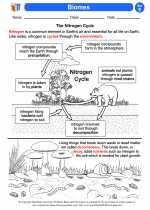 Biomes
Biomes  Worksheet/Answer key
Worksheet/Answer key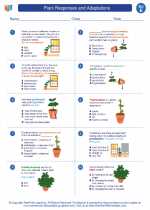 Plant Responses and Adaptations
Plant Responses and Adaptations  Worksheet/Answer key
Worksheet/Answer key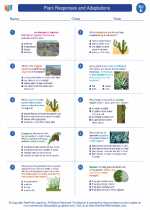 Plant Responses and Adaptations
Plant Responses and Adaptations  Worksheet/Answer key
Worksheet/Answer key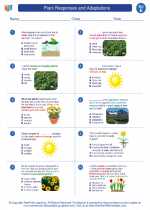 Plant Responses and Adaptations
Plant Responses and Adaptations  Vocabulary/Answer key
Vocabulary/Answer key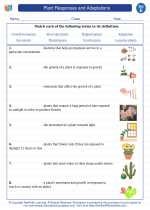 Plant Responses and Adaptations
Plant Responses and Adaptations  Vocabulary/Answer key
Vocabulary/Answer key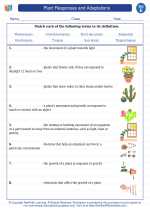 Plant Responses and Adaptations
Plant Responses and Adaptations 

 Activity Lesson
Activity Lesson
 Worksheet/Answer key
Worksheet/Answer key
 Worksheet/Answer key
Worksheet/Answer key
 Worksheet/Answer key
Worksheet/Answer key
 Vocabulary/Answer key
Vocabulary/Answer key
 Vocabulary/Answer key
Vocabulary/Answer key

The resources above cover the following skills:
Life Science
Interdependence - A. Plants and animals, including humans, interact with and depend upon each other and their environment to satisfy their basic needs. B. Both human activities and natural events can have major impacts on the environment. C. Energy flows from the sun through producers to consumers.
Compare and contrast adaptations displayed by animals and plants that enable them to survive in different environments such as life cycles variations, animal behaviors and physical characteristics.